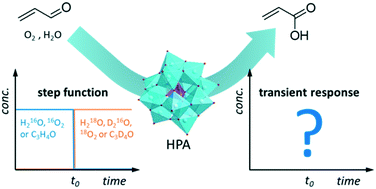Investigation of the acrolein oxidation on heteropolyacid catalysts by transient response methods†
Abstract
Acrylic and methacrylic acid are industrially produced via the partial oxidation of their corresponding aldehydes, namely acrolein and methacrolein. Different catalysts are used for these tasks: mixed-oxides based on Mo, V and W for the acrolein oxidation, and heteropolyacids based on Mo, V and P for the methacrolein oxidation, since the respective other catalyst has a poor performance. To generate a deeper knowledge of the catalytic mechanism, especially of the different properties of the catalysts, the heteropolyacid catalyzed acrolein oxidation was investigated and the results were compared to the mixed-oxide catalyzed acrolein oxidation. Stationary kinetic measurements and isotopic exchange experiments, such as 18O2-SSITKA H218O-SSITKA, D2O-SSITKA as well as the exchange of acrolein by its perdeuterated isotopologue, were performed. These studies provided details of the reaction mechanisms and showed many similarities but also critical differences between mixed-oxide and heteropolyacid catalysts.



 Please wait while we load your content...
Please wait while we load your content...